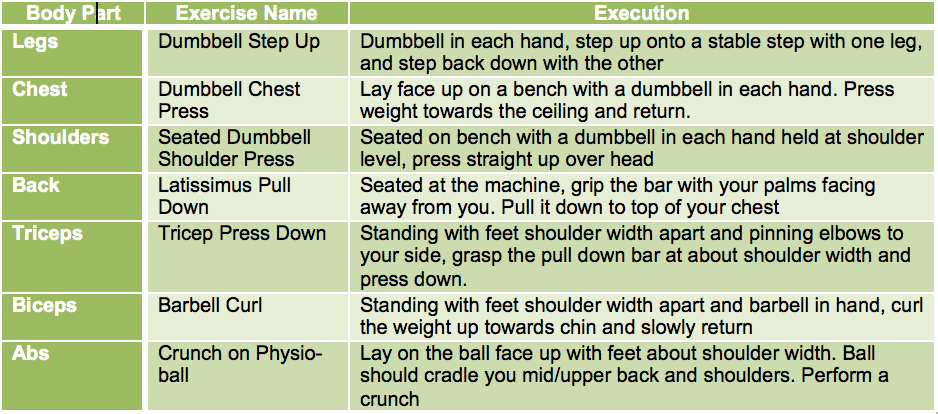First treadmill… then crunches…some curls and hit the showers. Sound all-too familiar? What about this? You get to the gym ready to run marathons and move mountains, but instead you end up tinkering around doing random exercises. Its about time that you short circuit those boring workouts with circuit training.
What Is It?
By definition, circuit training is a group of pre-determined exercises performed in succession without rest. Originally developed by Morgan and Anderson at the University of Leeds in England, it has evolved into a method of getting the most out of any workout. The original design included between 9-12 exercises or “stations” that a participant moved through in nonstop fashion. Complete one series of exercises means completion of one circuit. Today, a circuit can be fashioned to fit almost any workout goal, especially when time is a concern. The circuit can also be expanded into multiple rounds to increase the level of difficulty.
How to Make It Happen
First, choose your fitness goal. Is it muscular endurance? Speed and agility? Improve cardio? Next, select the appropriate exercises and order them in a succession that can be completed. When arranging the exercises just make sure to space out the body parts being trained in order to prevent over fatigue before the next circuit.
The greatest benefit is that circuits are time savers. An average workout can take about an hour to complete, but you can cut that down to about 45 minutes, depending on the number of exercise stations in the circuit. Another great benefit is that it allows you to go hard on every exercise and every set.
Because you are performing different exercise for different body parts, you are allowing recovery time for one muscle group while working another. Rest between the muscle groups being worked = more muscle energy to perform the next set. Now, I specifically said muscle energy. For example, let’s say that your circuit looks something like this: 12 repetitions of squats, crunches, push-ups and pull-ups. By the time you are done with you last repetition of pull ups, and are about to start a next round, you would have had three exercises or roughly 4 minutes of rest between your squat exercise. Voila! More energy left over to do more squats. Now you may feel physically taxed over all-or even slightly winded- but you would still have recovered enough energy to hit another set of squats. So, the moral of the story ladies and gentleman…Order exercises wisely.
Here are some sample circuit training routines you can try:
Full Body: Can be performed 2-3 times per week. Allow at least two days rest in between workouts.

Functional Circuit: can be performed 2-3 times per week. Allowing at least two days rest in between workouts.

